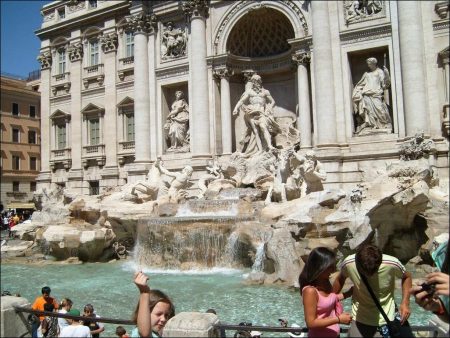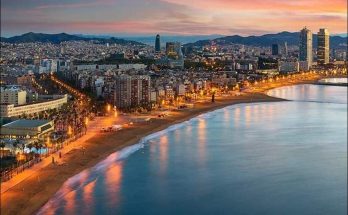The Colosseum, of course, which charges no admission for entrance to its ground floor, and no admission at all to visit any part of the ruins on Sundays… Following that, drive out as far as you have time to go along the ancient Appian Way… It’s here that you’ll pass the several largest Christian Catacombs. Most interesting and significant of these are the Catacombs of Saint Sebastiano (once the burial place of both St. Peter and St. Paul), which are the second catacombs you’ll pass as you proceed along the Appian route.
The Vatican Museum and the Sistine Chapel are also musts. Remember that they are at the rear of the Vatican, a long walk from the front of St. Peter’s… Downstairs in St. Peter’s a number of glass-sided coffins containing bodies of the Popes, are on view… The figures inlaid on the floor of St. Peter’s show the lengths of other famous cathedrals, thus giving you an indication of the enormous size of St. Peter’s. In the Borghese Gardens, you won’t want to miss the fabulous Villa Borghese (sometimes called the “Galleria Borghese“), with its treasures of paintings, sculpture and furnishings. On the first floor, there are works by the great sculptor Bernini (his famous Rape of Persephone is here); on the second floor is Raphael’s “Descent from the Cross,” together with several Botticelli’s and a whole array of paintings by my own favorite, the master Caravaggio.
Finally, the grandest sight in Rome, to my mind, is the “Campidoglio” (Capitoline Hill), the sight of which has caused many a tourist actually to weep over its sheer beauty. The steps and approaches were designed by Michelangelo; the plaza holds one of the few classic bronze statues in existence-the Emperor Marcus Aurelius on horseback-which was discovered several centuries ago on the bottom of the Tiber, where it had been thrown by Roman-hating barbarians. When Michelangelo was asked to design a pedestal for the statue, he answered, “I am not worthy.”
Views: 217



